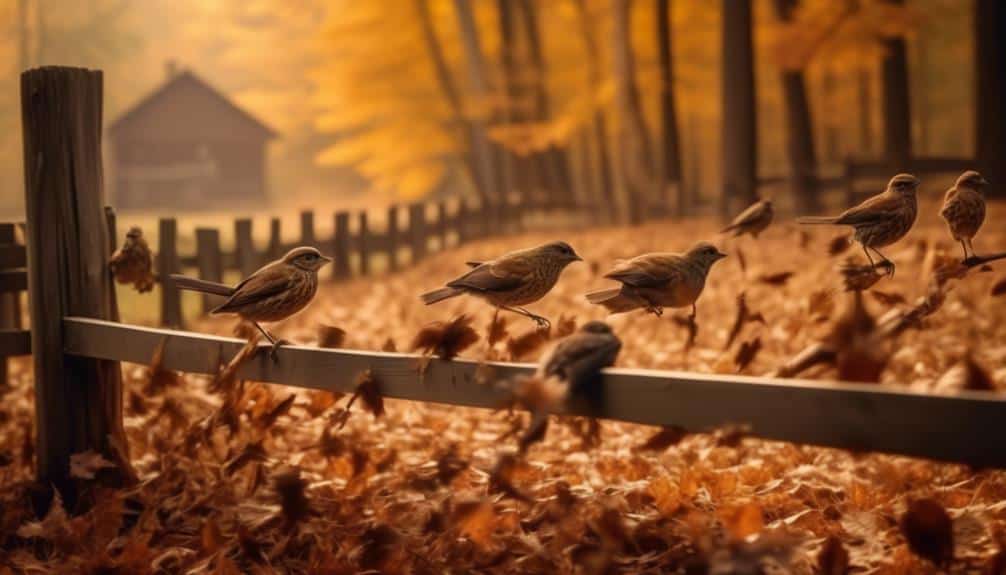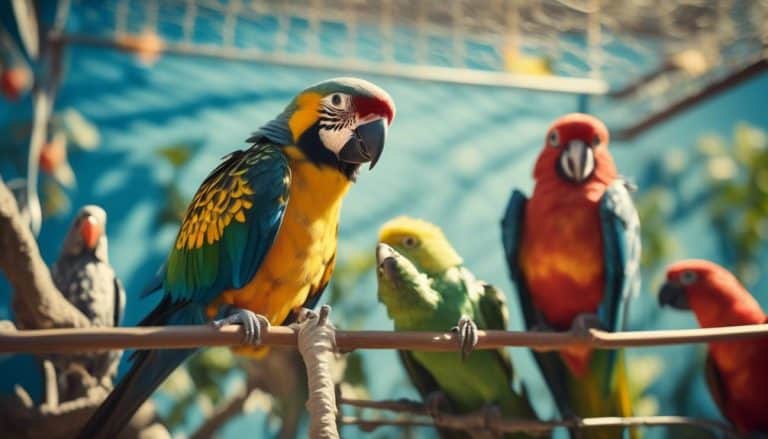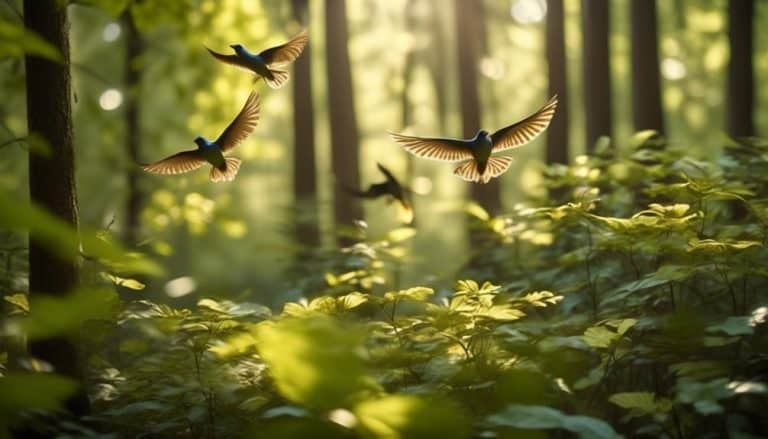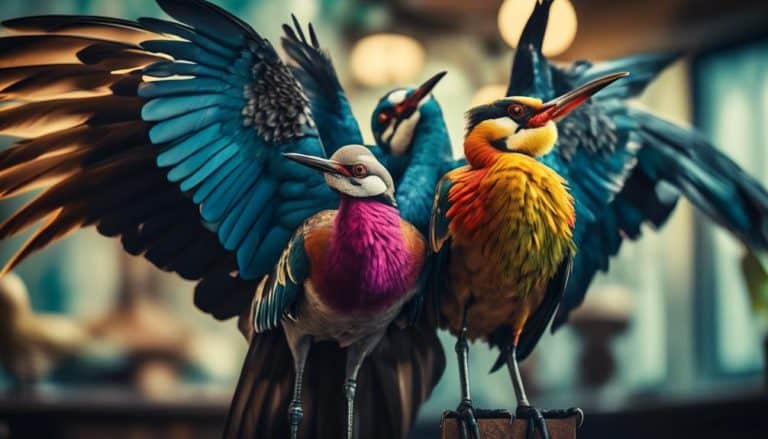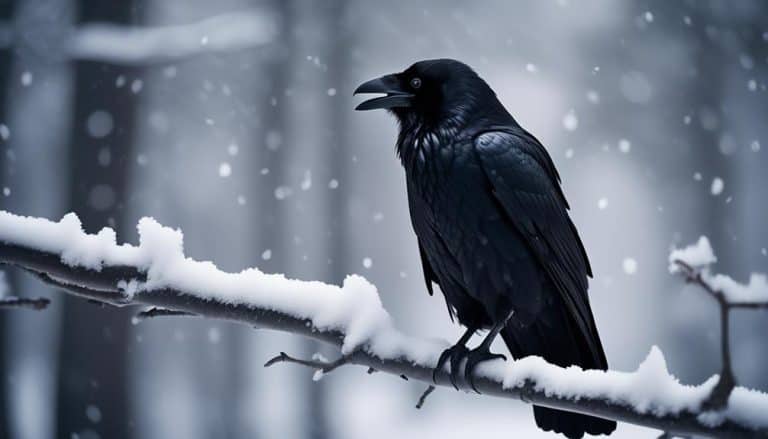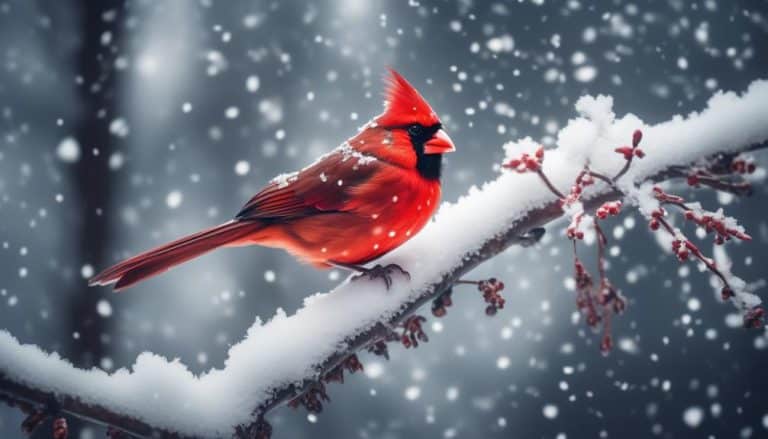As the saying goes, 'birds of a feather flock together,' and in Ohio, that couldn't be more true when it comes to brown birds. These unassuming avian creatures may not boast vibrant colors like their more flamboyant counterparts, but they hold a certain allure that captivates both birdwatchers and nature enthusiasts alike.
From their distinctive characteristics to their fascinating migration patterns, there is much to uncover about the brown birds that call Ohio home. So, let's embark on a journey to explore the world of these unassuming yet intriguing creatures and discover the hidden wonders they bring to the Buckeye State.
Common Brown Bird Species
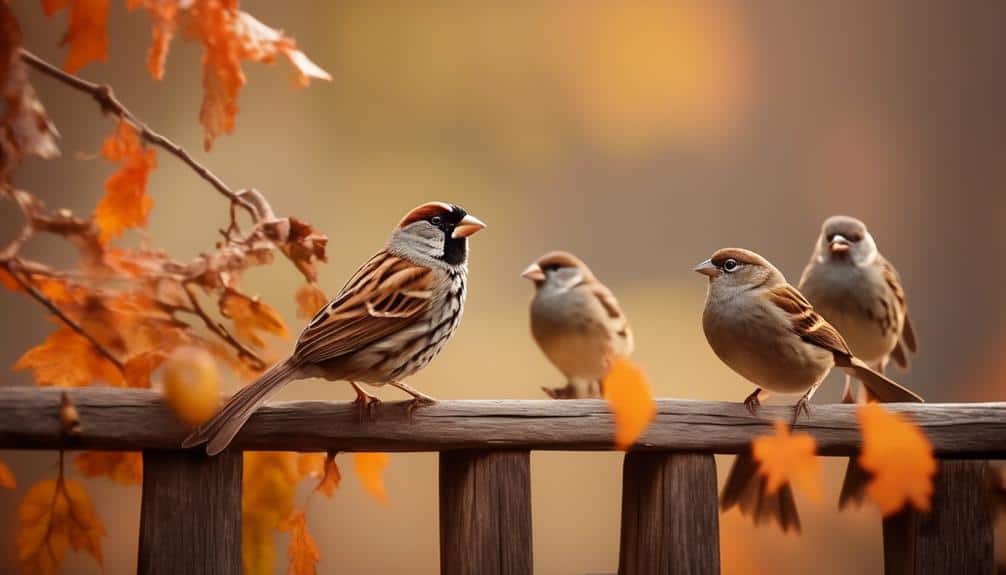
In Ohio, there are several common brown bird species that can be found throughout the state. Bird watching and bird identification enthusiasts would appreciate the diversity and beauty of these avian creatures.
One such species is the Eastern Towhee (Pipilo erythrophthalmus). This medium-sized bird can be easily identified by its striking reddish-brown plumage and contrasting black upperparts. The male Eastern Towhee is especially distinctive, with its bold white belly and red eyes. They're commonly found in shrubs and thickets, where they forage for insects and seeds.
Another common brown bird species in Ohio is the Song Sparrow (Melospiza melodia). These small birds are known for their melodious songs, which they use to attract mates and establish territory. Their plumage varies, but they typically have brown streaks on their breast and flanks, with a grayish-brown back. Song Sparrows can be found in a variety of habitats, including marshes, fields, and gardens.
Lastly, the American Tree Sparrow (Spizelloides arborea) is another brown bird species commonly seen in Ohio. These birds have a distinct reddish-brown cap, a gray face, and a streaked breast. They're often found in open habitats with shrubs and trees, such as meadows and woodland edges.
Characteristics of Brown Birds
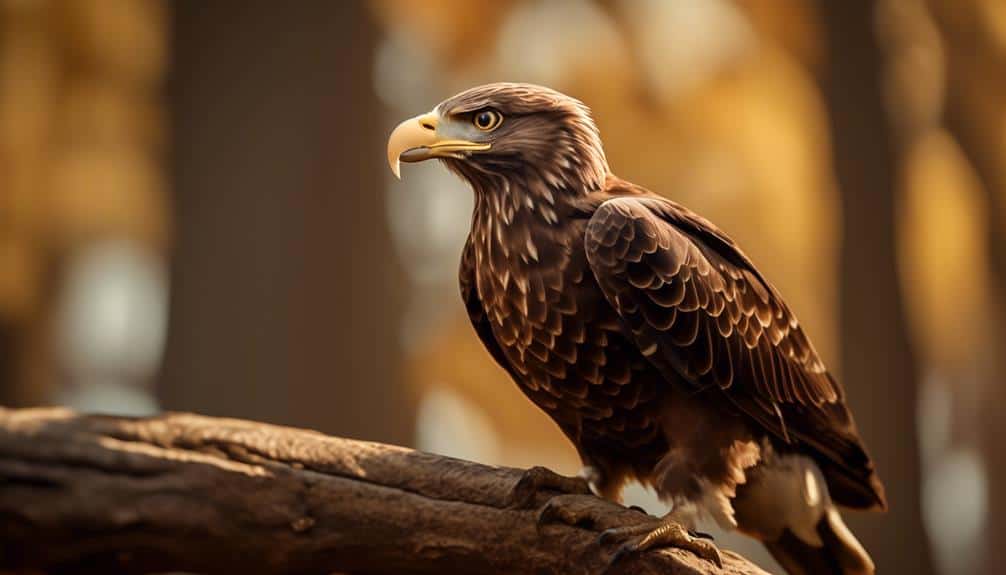
As we shift our focus to the characteristics of brown birds, it's important to examine the physical attributes and behaviors that distinguish these avian species found in Ohio.
- Brown bird habitats in Ohio:
- Brown birds in Ohio can be found in a variety of habitats, including forests, shrublands, grasslands, and wetlands.
- They often prefer areas with dense vegetation for nesting and foraging.
- Some common brown bird species in Ohio include the American Robin, Eastern Towhee, and Brown Thrasher.
- Diet and feeding habits of brown birds in Ohio:
- Brown birds in Ohio have diverse diets, consisting of insects, fruits, seeds, and nectar.
- They forage on the ground, in trees, and in shrubs, using their sharp beaks to extract food.
- Many brown birds in Ohio are omnivorous, consuming both plant material and small animals.
- Physical characteristics:
- Brown birds in Ohio typically have brown feathers, which provide camouflage in their natural habitats.
- They've varying sizes, with some species being small and others larger.
- Their wings are adapted for flight, enabling them to soar and glide effortlessly.
- Behaviors:
- Brown birds in Ohio are known for their melodious songs, which they use to communicate and attract mates.
- They're often territorial and will defend their nesting sites vigorously.
- Many brown bird species in Ohio migrate to warmer regions during the winter months.
Understanding the characteristics of brown birds in Ohio helps us appreciate and conserve these remarkable avian species.
Migration Patterns of Ohio's Brown Birds
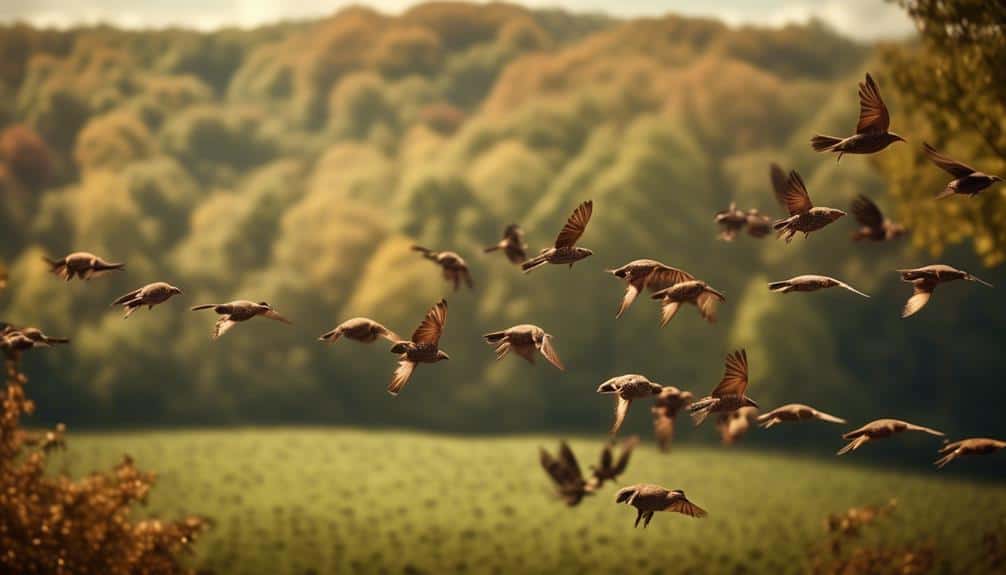
Ohio's brown birds exhibit fascinating migration patterns, which play a crucial role in their survival and population dynamics. Understanding their migration routes and breeding habits is essential for conservation efforts.
The migration routes of Ohio's brown birds vary depending on the species. For example, the Eastern Phoebe travels from its wintering grounds in the southern United States and Central America to breed in Ohio during the spring and summer months. These birds follow a migratory path called the Eastern Flyway, which runs along the Atlantic coast.
On the other hand, the Brown Thrasher migrates from the southeastern United States to Ohio, following a path known as the Central Flyway. This route takes them through the Midwest and Great Plains.
The breeding habits of brown birds in Ohio are diverse. Some species, like the Eastern Towhee, build their nests on the ground, while others, such as the Eastern Meadowlark, construct their nests in grasslands. Understanding these breeding habits is important for protecting their nesting sites and ensuring their successful reproduction.
Best Birding Spots for Brown Birds in Ohio
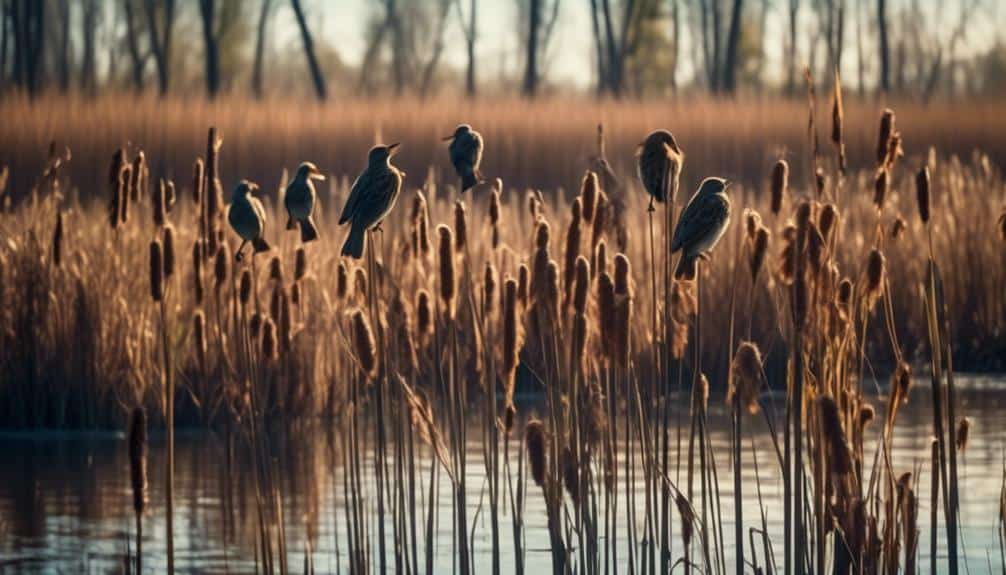
I have explored numerous locations in Ohio renowned for their abundance of brown birds, making it possible to identify the best birding spots for observing these species in their natural habitats. Here are the top four spots to visit for an unforgettable birding experience:
- Magee Marsh Wildlife Area: Located on the southern shore of Lake Erie, Magee Marsh is a prime location for birding enthusiasts. Its diverse habitats, including marshes, woodlands, and meadows, attract a wide variety of brown birds. To capture stunning birding photographs, bring a telephoto lens and use a fast shutter speed to freeze their quick movements.
- Shawnee State Forest: Situated in southern Ohio, Shawnee State Forest offers a unique opportunity to observe brown birds in a picturesque setting. The forest's extensive trail system provides ample opportunities for spotting species such as the Eastern Towhee and the Brown Thrasher. For the best photography results, use a tripod to stabilize your camera and experiment with different lighting angles.
- Hocking Hills State Park: Known for its stunning rock formations and waterfalls, Hocking Hills State Park is also home to a diverse array of brown birds. Explore the park's wooded areas, such as Ash Cave and Old Man's Cave, to spot species like the Ovenbird and the Song Sparrow. To capture detailed shots, use a telephoto lens with a wide aperture to create a shallow depth of field.
- Ottawa National Wildlife Refuge: Situated along the shores of Lake Erie, Ottawa National Wildlife Refuge offers excellent birding opportunities. Its wetlands and prairies attract brown birds such as the Marsh Wren and the Savannah Sparrow. When photographing these birds, use a long lens to maintain a safe distance and avoid disturbing their natural behaviors.
While these birding spots offer incredible opportunities to observe brown birds, it's important to consider the role of climate change in affecting their populations. Changes in temperature and habitat availability can impact their breeding, migration, and overall survival. Understanding these dynamics can help researchers and conservationists develop strategies to protect these beautiful species for future generations to enjoy.
Attracting Brown Birds to Your Backyard
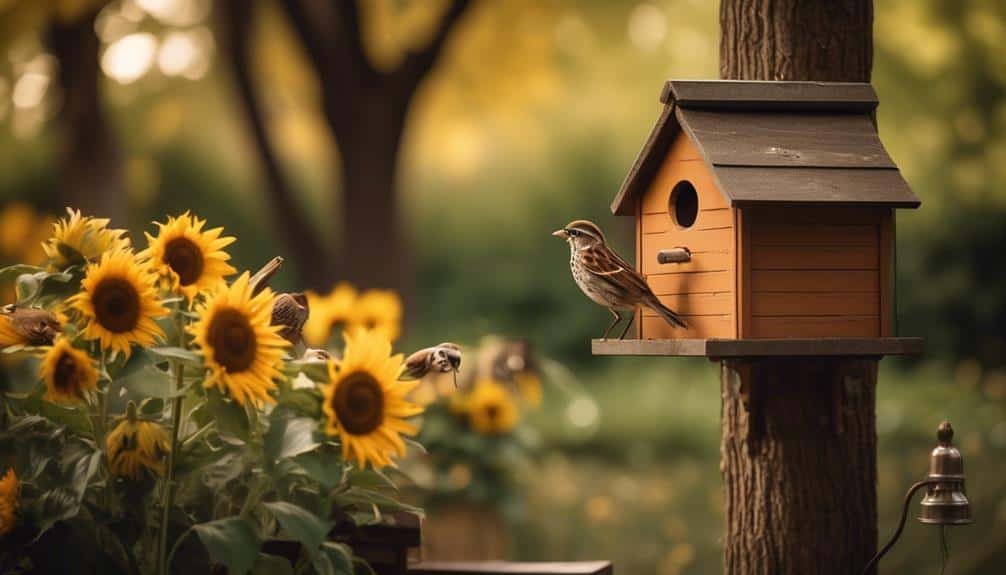
To attract brown birds to your backyard, create a habitat that provides essential resources such as food, water, and shelter. Brown birds, like many other bird species, require these resources to survive and thrive. By creating a bird-friendly backyard, you can attract these beautiful creatures even in the winter months.
One way to attract brown birds in winter is by providing a variety of food sources. You can do this by offering a mix of bird feeders filled with seeds, nuts, and berries. Additionally, planting native plants that produce fruits and berries can provide natural food sources for these birds.
Water is also crucial for attracting brown birds. Installing a birdbath or a small pond can provide them with a place to drink and bathe. Make sure to keep the water source clean and fresh, especially during the winter when water sources may freeze.
Furthermore, creating shelter is essential for brown birds, especially during the colder months. You can do this by planting dense shrubs and trees that provide protection from harsh weather conditions and predators. Building birdhouses or providing nesting materials can also encourage nesting and breeding.
By following these tips and creating a bird-friendly backyard, you can attract a variety of brown birds to your property, providing them with the resources they need to survive and adding beauty to your outdoor space.
| Food Sources | Water Sources | Shelter |
|---|---|---|
| Bird feeders filled with seeds, nuts, and berries | Birdbath or small pond | Dense shrubs and trees |
| Native plants that produce fruits and berries | Clean and fresh water source | Birdhouses |
| Supplementary food like mealworms | – | Nesting materials |
Conservation Efforts for Ohio's Brown Birds
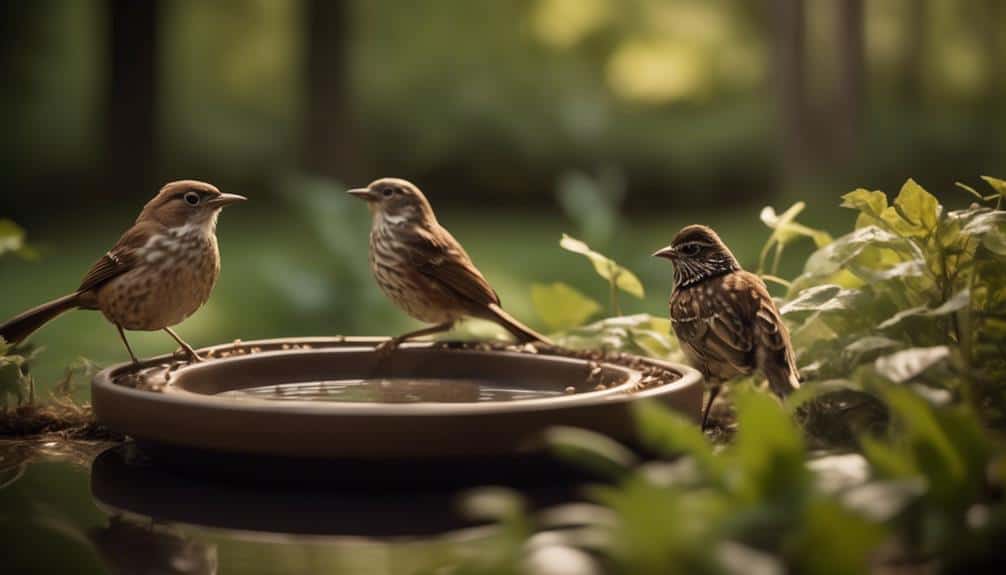
Conservation efforts for brown birds in Ohio are crucial for the protection and preservation of their habitats and populations. Here are four key reasons why it's important to protect the habitat for brown birds in Ohio:
- Threats to brown bird populations in Ohio:
Brown birds in Ohio face a range of threats that can impact their populations. These threats include habitat loss due to urbanization, deforestation, and agricultural practices, as well as climate change, pollution, and invasive species. By implementing conservation efforts, we can mitigate these threats and ensure the survival of brown bird populations.
- Importance of protecting habitat for brown birds in Ohio:
Habitat is essential for the survival of brown birds. It provides them with food, shelter, and breeding grounds. By conserving and protecting their habitat, we can ensure that these birds have a suitable environment to thrive and reproduce.
- Maintaining biodiversity:
Brown birds contribute to the biodiversity of Ohio's ecosystems. They play important roles in pollination, seed dispersal, and insect control. By protecting their habitat, we support a healthy and balanced ecosystem.
- Ecotourism and economic benefits:
Brown birds are a valuable asset for ecotourism in Ohio. Birdwatching is a popular recreational activity, attracting visitors from near and far. By conserving brown bird habitats, we can promote ecotourism and generate economic benefits for local communities.
Frequently Asked Questions
How Do Brown Birds Communicate With Each Other?
Brown birds communicate with each other through a combination of vocalizations and body language. They use different calls and songs to convey specific messages, while their plumage also plays a role in visual communication among individuals.
What Is the Lifespan of Brown Birds in Ohio?
The lifespan of brown birds varies depending on the species. Communication plays a vital role in their survival, allowing them to coordinate mating, defend territory, and warn of predators.
Do All Brown Birds in Ohio Migrate During the Winter?
No, not all brown birds in Ohio migrate during the winter. Some species may change their feathers, but migratory patterns vary among different types of brown birds in Ohio.
Are There Any Endangered Brown Bird Species in Ohio?
Yes, there are endangered brown bird species in Ohio. Conservation efforts are crucial to protect these species and their habitats. We must work together to ensure their survival for future generations to appreciate.
Can You Provide Some Tips for Photographing Brown Birds in Their Natural Habitat?
When photographing brown birds in their natural habitat, it is important to use techniques that capture their beauty. Focus on their unique features and behaviors, and experiment with different angles and lighting. To photograph birds in flight, use a fast shutter speed and continuous autofocus.
Conclusion
Despite their common appearance, the brown birds of Ohio possess a unique beauty that's often overlooked. From the charming warblers to the elegant sparrows, these birds showcase a wide range of characteristics and migration patterns that are worth exploring.
While birding in Ohio may not be as glamorous as in other regions, the state's commitment to conservation efforts ensures that these brown birds will continue to thrive and enchant us with their presence.
So next time you venture into the wilderness, don't disregard the brown birds – they've secrets waiting to be discovered.

